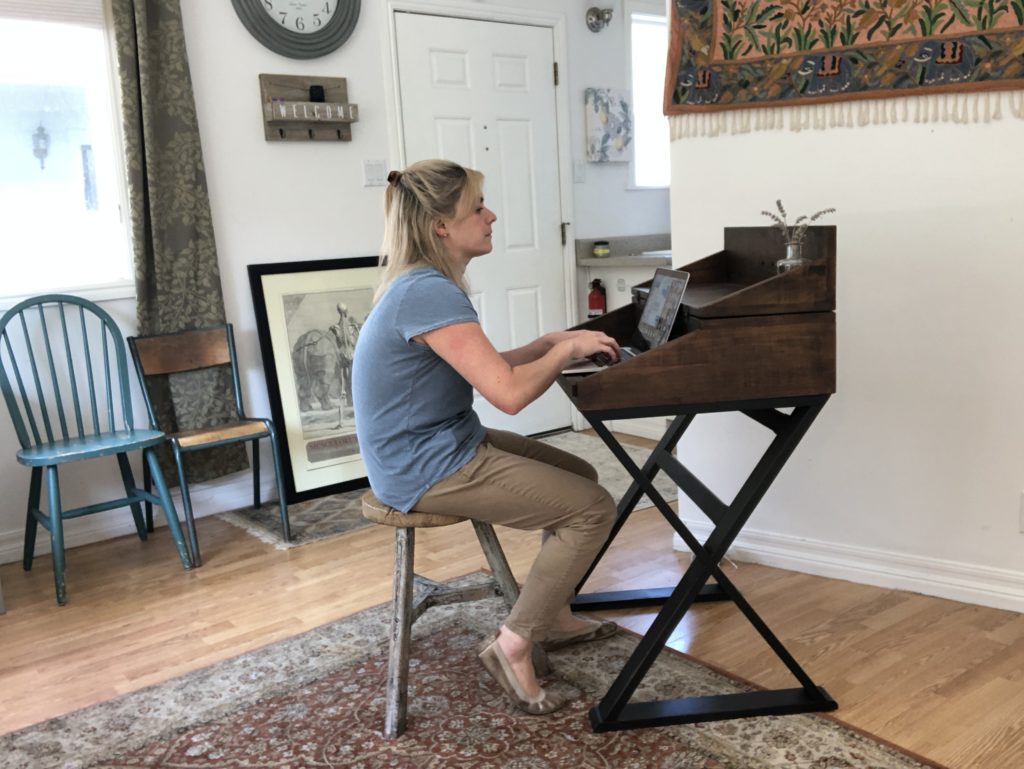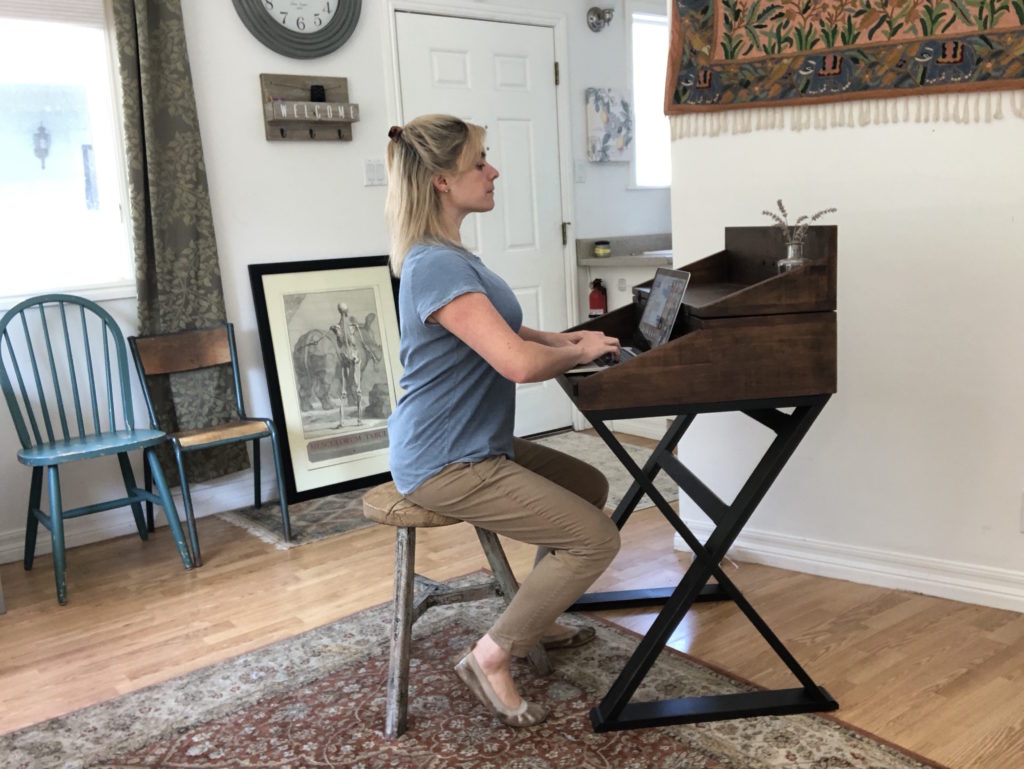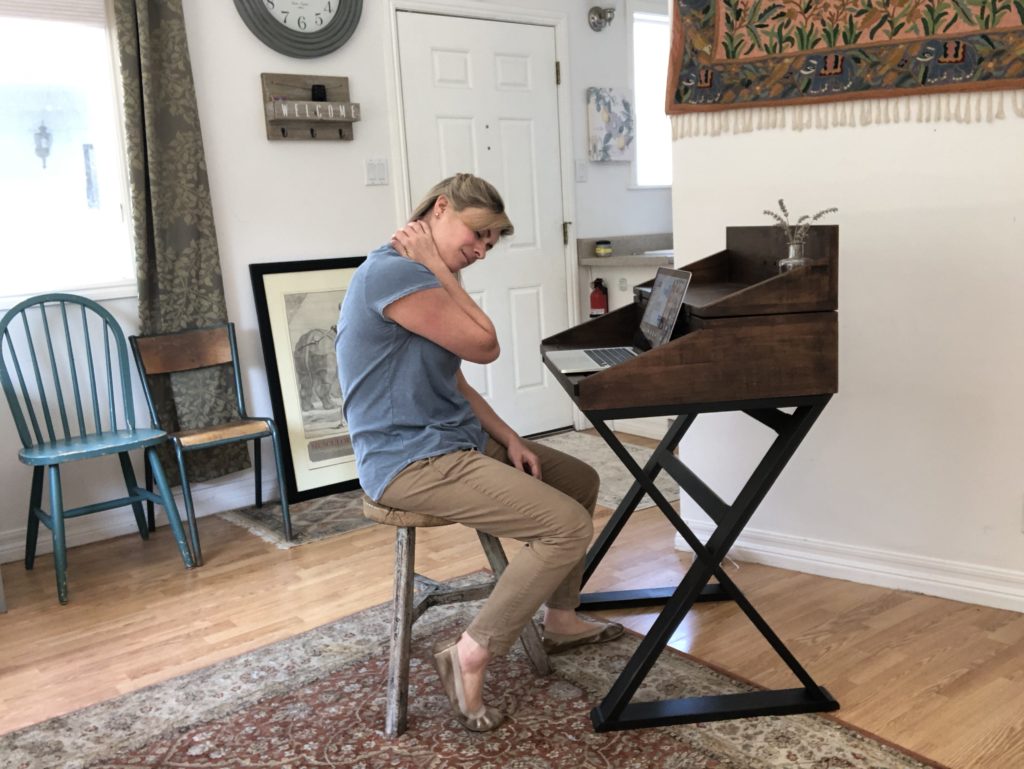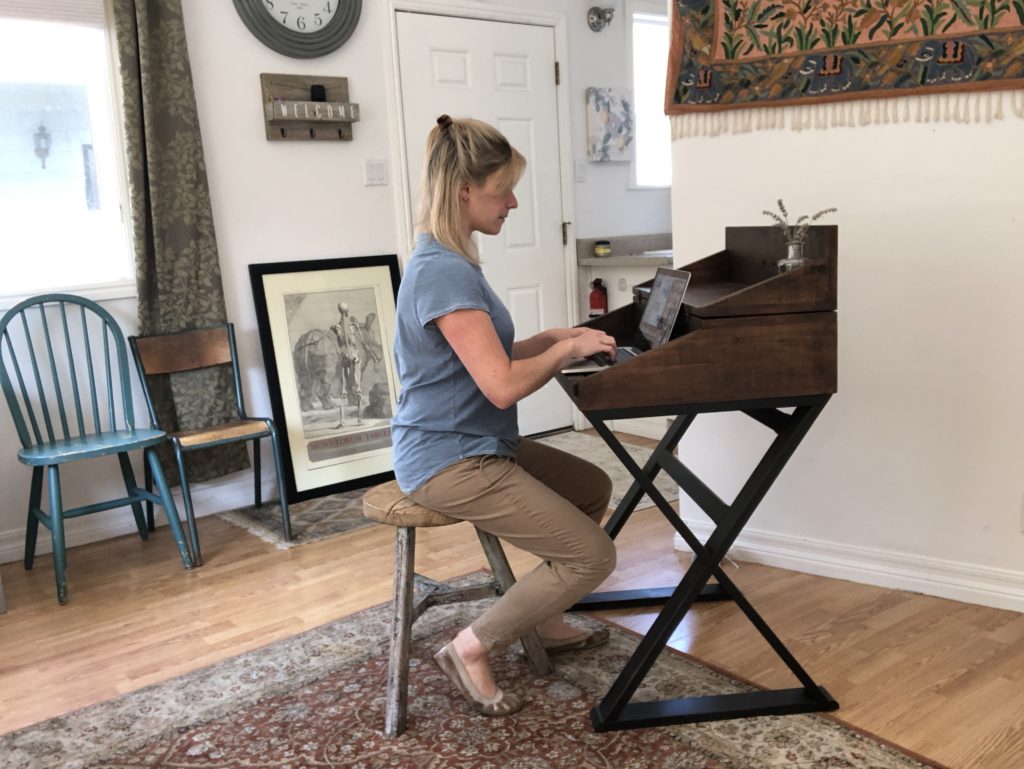
17 Aug How to Sit
Sitting can be easier than you think.
What creates neck, shoulder and back pain at work?
Not sitting itself, but HOW you sit.
Let’s look at some common ways people sit that create pain:
 Sitting behind the sit bones creates a C-Curve in the spine. Ouch. You can see how the neck and back are for sure going to hurt.
Sitting behind the sit bones creates a C-Curve in the spine. Ouch. You can see how the neck and back are for sure going to hurt.
People then try to correct this slumping posture with a military style posture.  At first glance, this posture ‘looks’ pretty good. However, lifting your chest as high as you can, and pulling your shoulders back and down is unsustainable and uncomfortable. This causes an opposite tension, but a no less painful one. You won’t be able to maintain this position long
At first glance, this posture ‘looks’ pretty good. However, lifting your chest as high as you can, and pulling your shoulders back and down is unsustainable and uncomfortable. This causes an opposite tension, but a no less painful one. You won’t be able to maintain this position long …but if you do, you are sure to add an additional pain–that of a headache!
…but if you do, you are sure to add an additional pain–that of a headache!
“Good Posture” is when the body feels at ease.  You will know it because you can breathe easily and you are not still. In fact, the body loves to move. So allow yourself to rock forward on your sit bones (they are the shape of the bottom of a rocking chair for a reason). Rock a little forward and little back, and find where it is easiest to breathe.
You will know it because you can breathe easily and you are not still. In fact, the body loves to move. So allow yourself to rock forward on your sit bones (they are the shape of the bottom of a rocking chair for a reason). Rock a little forward and little back, and find where it is easiest to breathe.
Let your head balance on top of the spine–this means allowing the back of the head to flow up, and allow your head teeny tiny movements as it refinds balance over and over again.
Are your feet touching the ground? If they are not, you are causing yourself a lot of uneccessary pain. You want your feet to hold some of the weight of your head and torso. Rock a little forward from your hip joints (Not your waist) and give your big toes some of the weight of your body.
If you are doing this correctly, you should feel that it is easy to breathe. You should feel light and your whole body should be in constant teeny tiny movements.
Click here to see my 2 minute video of sitting:
Wondering how you can work like this? Studies show in children that moving while studying or learning, actually improves test scores! Why? because your brain works better when there is less tension in your body. So sit on those sit bones and allow yourself to move! The Act of Moving is the Act of Finding Balance.
Let me know your thoughts or any issues you are having with sitting. I would love to trouble shoot them with you!
Warmly,
Lena

Rebecca dale
Posted at 09:37h, 22 AugustI am having lessons prompted by rsi in my right shoulder blade. It has helped a lot but the one area I struggle is sitting. Even when I am sitting well I feel muscular aches spreading up my back. Is this something that is “normal”? One teacher I saw said it is very common and will go away with time. My new teacher says I shouldn’t feel any aching sensation. My rsi pain has gone from constant to only when I use my right hand. Unfortunately that’s a lot of the time and restricts piano playing and computer use. Can Alexander technique help with this? I should add I’ve only had about 8 lessons so far. Thank you for your interesting blog.
Alexander Technique SF Bay Area
Posted at 20:56h, 19 SeptemberThank you so much for reaching out, Rebecca. I’m so glad you started lessons, and I am so sorry it took me so long to respond! My website is new and I am still working out the kinks.
Repetitive Strain Injuries can take awhile to heal sometimes. Often if the nerve is being touched, it will ‘yell at you,’ and the way it yells is through pain. I think it is great that Alexander lessons have helped improve it. Alexander Technique can most definitely help you use your right hand without pain. It takes about 12-24 lessons studies show, to truly correct a habit that has been causing you pain.
Some questions I have for you:
Does your shoulder still hurt during lessons or just at home?
Have you worked in your lessons about thinking out the pinkies when using your right hand instead of your thumb and forefinger?
When you are at the piano and computer, could you be more forward on your sit-bones? does that ease the pain?
Without seeing for myself, I would guess that while you are sitting, you are tightening your neck slightly and leaning back. You are also probably drawing your fingers more into your hand then out towards the keyboard. Please let me know how this helps/or doesn’t…